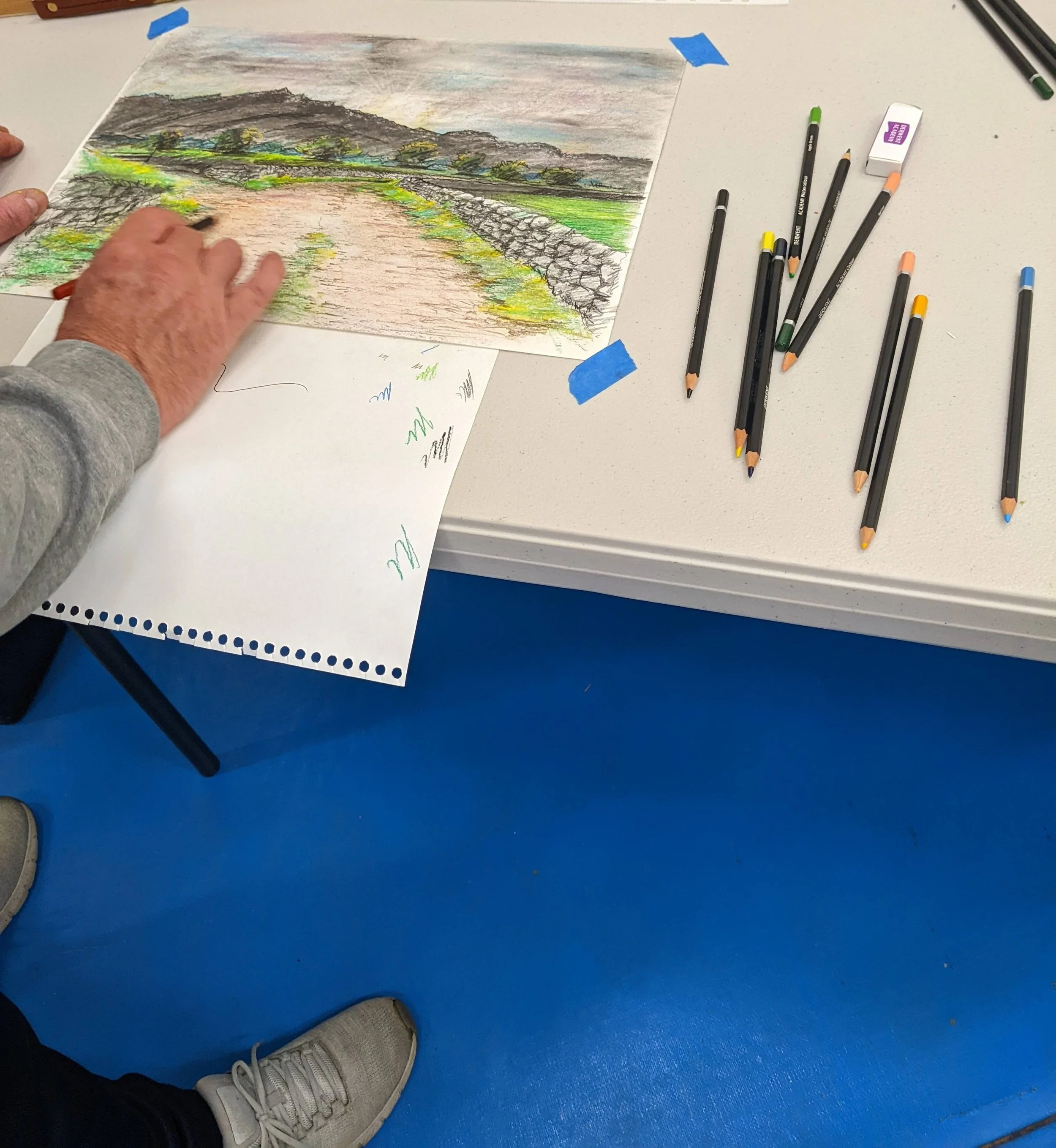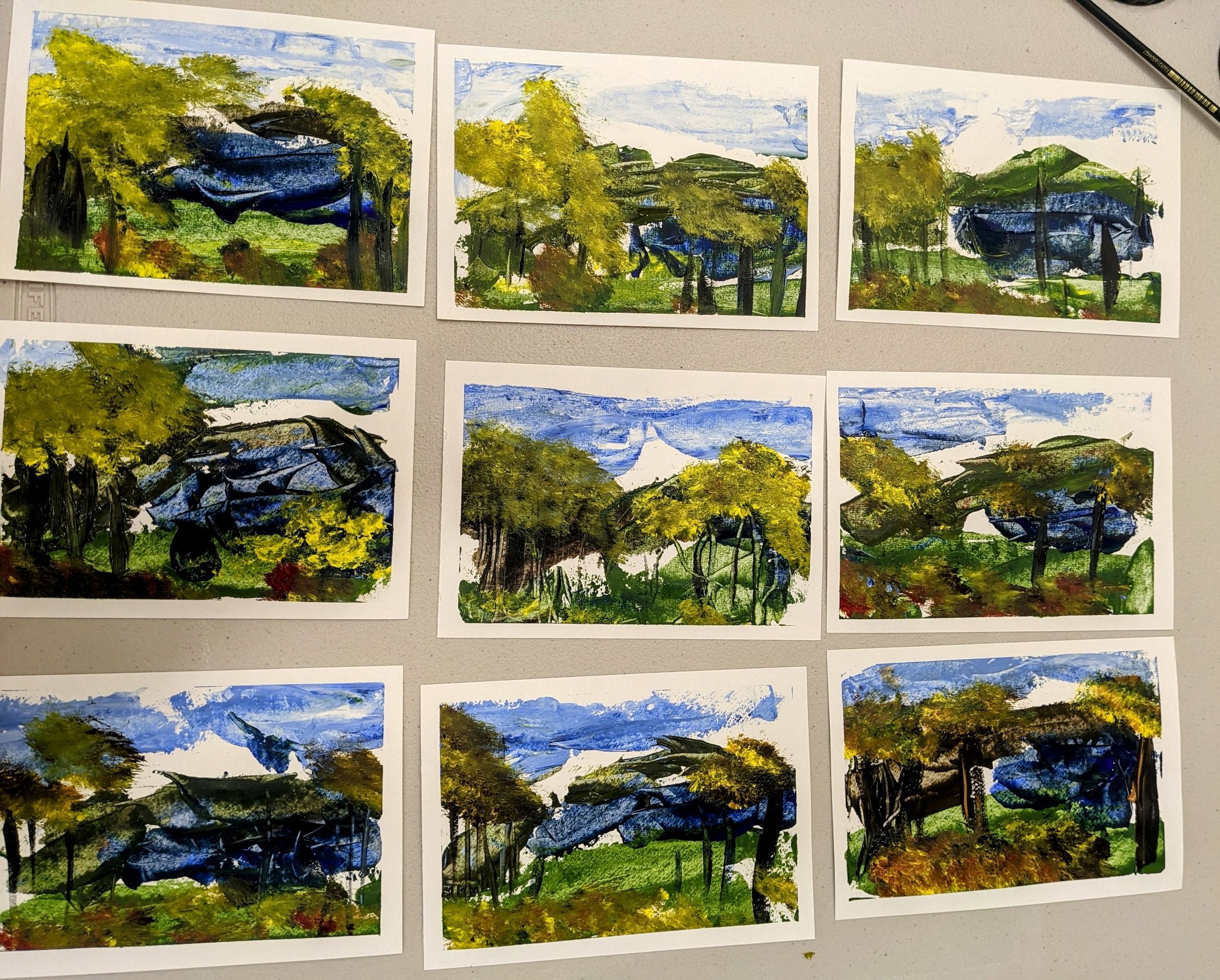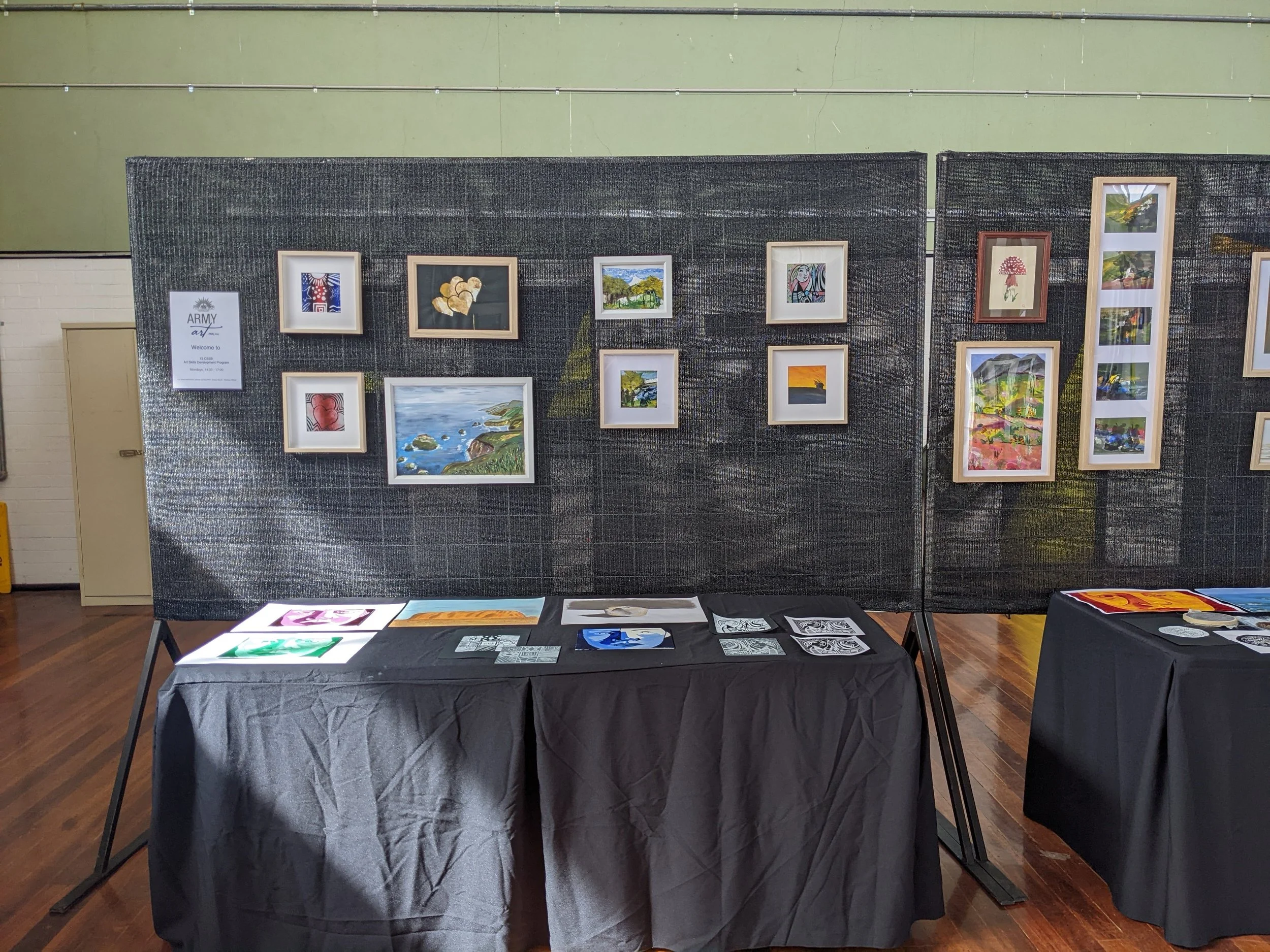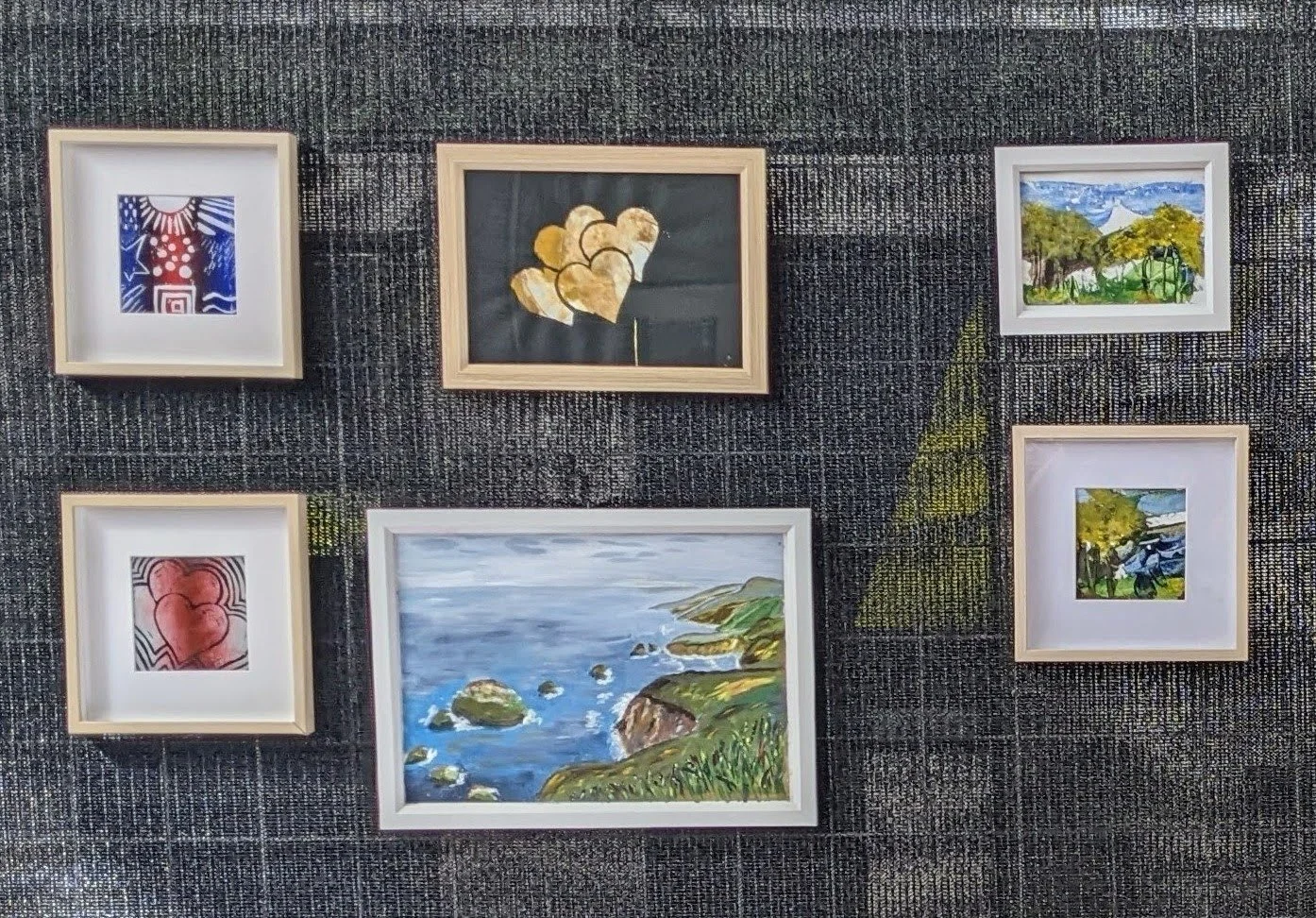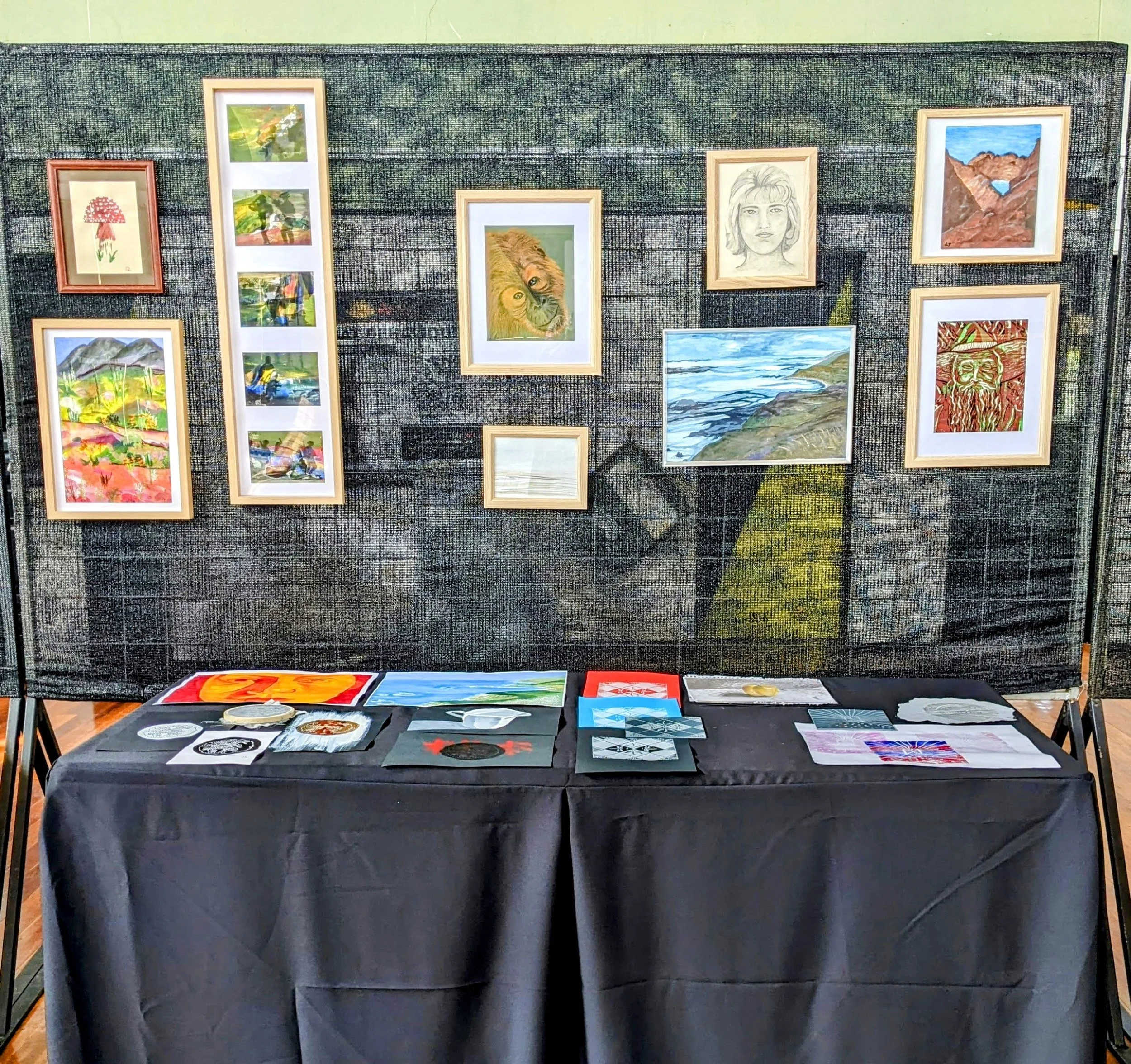Creative Capacity in Uniform
Reflections on Facilitating the Pilot Defence Art Skills Development Program
In late 2021, I was invited by Army Art (WA) Inc. to outline how art-based learning might support wellbeing and problem-solving in the Defence environment. This led to the development and delivery of a 10-week Art Skills Development Program (ASDP) for serving members of the Australian Defence Force, piloted at Irwin Barracks in late 2022.
The course was designed as a workplace-based creative learning initiative an opportunity for personnel to engage with both pragmatic and artistic forms of creative thinking. We explored drawing, painting, and printmaking techniques using a range of media including graphite, watercolour, acrylics, and linocut. The format prioritised experiential, skills-based artmaking over art therapy, though many participants noted the therapeutic benefits of the process.
Sessions ran weekly for 2.5 hours, with a final week dedicated to curating a group display. Participants selected and framed their own works, co-creating a temporary gallery in the 10th Light Horse Hall a fitting end to our time in the repurposed squash court that had served as our studio.
While attendance fluctuated, five participants remained consistent across the program. Their reflections highlighted several strengths: the opportunity to try something new, the focus and relaxation that came with hands-on work, and the value of a supportive and flexible learning environment. Having a dedicated creative space, separate from normal work areas enabled a different kind of presence. Being able to leave works in progress in place between sessions supported continuity and a sense of ownership that’s often missing from standard professional development.
Naturally, there were challenges. Competing operational demands made regular attendance difficult for some. The Monday afternoon time slot wasn’t ideal, and once people became immersed, 2.5 hours felt short. Suggestions included longer sessions, a later-in-the-week schedule, and the inclusion of 3D work in future iterations.
There’s something distinctly human about sharing a creative space. It invites focus, humour, and curiosity but also vulnerability. In structured, high-responsibility settings, creativity requires a different kind of participation: a willingness to experiment, to tolerate uncertainty, and to be seen mid-process. The participants’ openness to that stepping away from routine, trying unfamiliar materials, working around injury or hesitation is what brought the studio to life and made the program a success.
What often goes unmeasured in formal evaluations is just how much enjoyment these programs bring. Watching people laugh at their own mishaps, become absorbed in the process, and take pride in what they created was a privilege to witness.
This experience reminded me that creativity isn’t a luxury. Creative permission is a resource, and one more workplaces should make space for.
Many thanks to the 13th Brigade for the opportunity to deliver this program, and to the participants for showing up, staying open, and making the space their own.
Notes:
This pilot was grounded in ideas I first explored in Enhancing Resilience and Adaptive Capacity Through Creativity a piece that laid the foundation for this work by proposing that creative engagement can strengthen the psychological flexibility and resourcefulness needed in high-pressure environments. The concept of creative permission, allowing space to explore, experiment, and express, emerged through practice as a key enabler of that process.
Creative permission refers to the conscious or supported decision to engage in creative activity without self-censorship or fear of judgment. It involves giving oneself (or being given) the freedom to explore, make mistakes, and create for the sake of process not performance. In structured or high-stakes environments, creative permission can enable risk-taking, experimentation, and a reconnection with personal agency.



